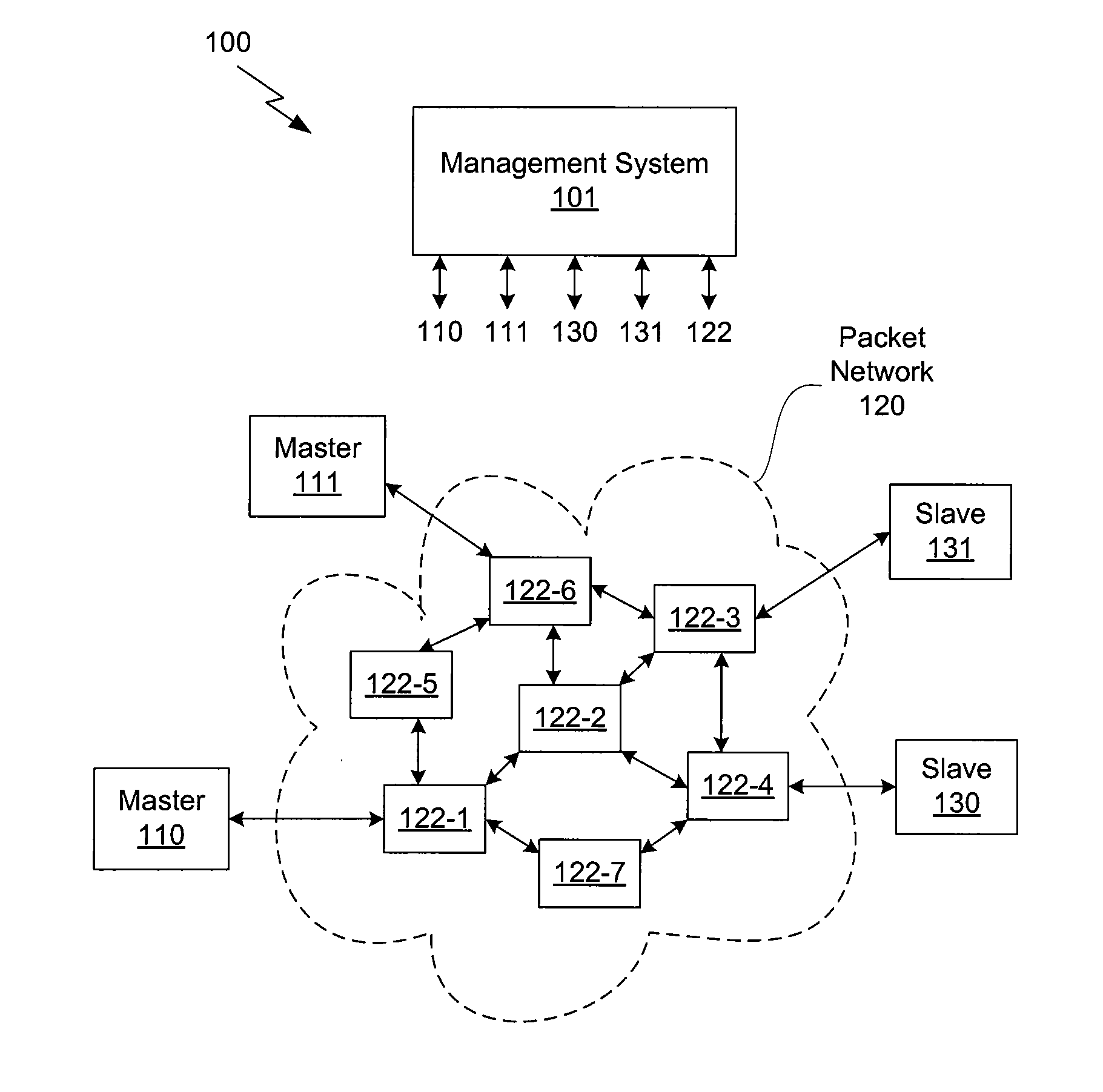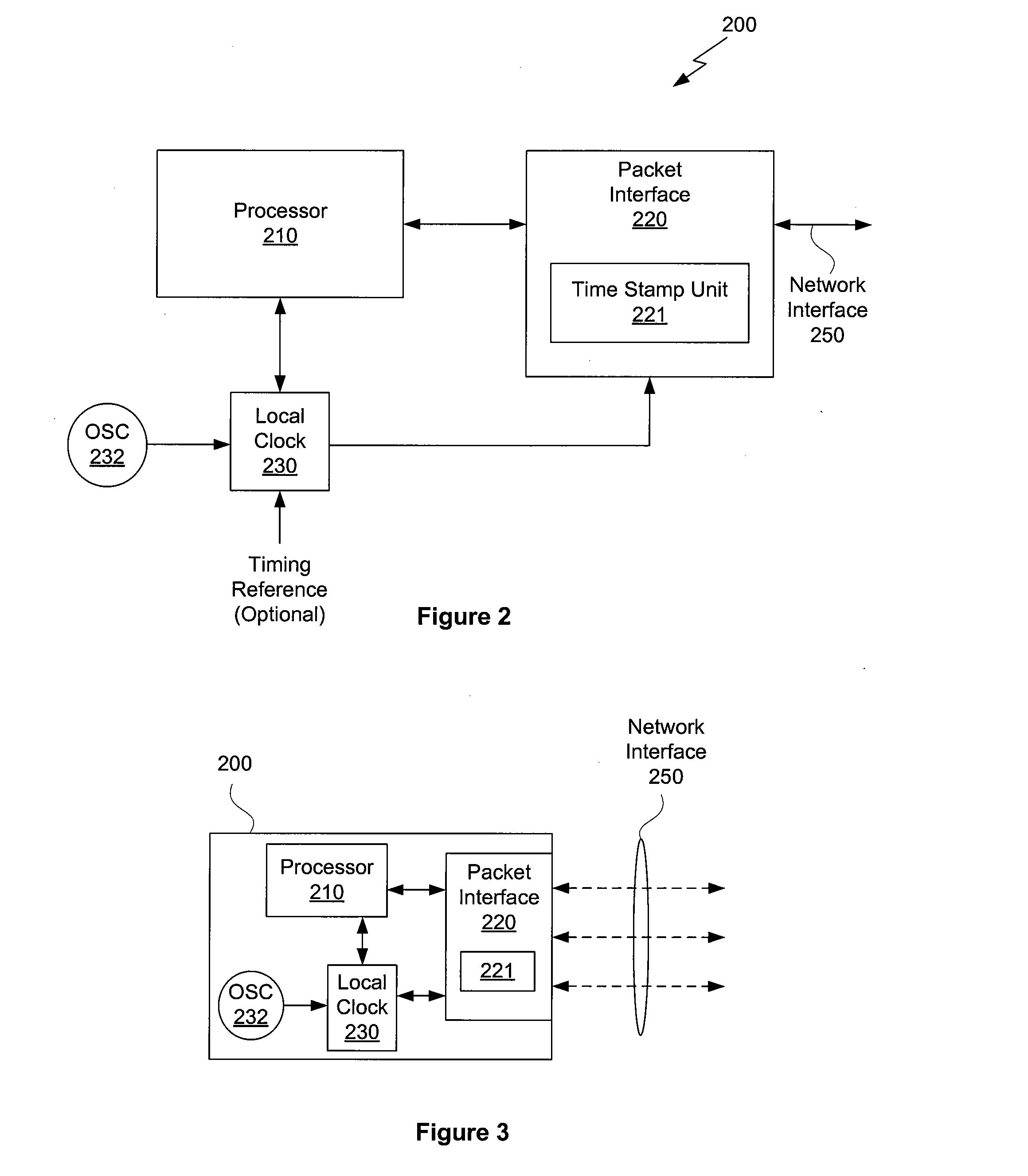Method and system for analyzing and qualifying routes in packet networks
- Summary
- Abstract
- Description
- Claims
- Application Information
AI Technical Summary
Benefits of technology
Problems solved by technology
Method used
Image
Examples
Embodiment Construction
[0029]In the following description, numerous specific details are set forth to provide a more thorough understanding of the invention. However, it will be apparent to one of skill in the art that the invention may be practiced without one or more of these specific details. In other instances, well-known features have not been described in order to avoid obscuring the invention.
[0030]FIG. 1 illustrates a network system 100 configured to implement one or more aspects of the invention. Network system 100 may include one or more master clocks and one or more slave clocks. In the embodiment illustrated in FIG. 1, network system includes two master clocks, namely master clock 110 and master clock 111, and two slave clocks, slave clock 130 and slave clock 131. The communication path between a master clock and a slave clock is through a packet network 120, which includes a plurality of network elements 122. Network system 100 is managed by a management system 101, which communicates with ea...
PUM
 Login to View More
Login to View More Abstract
Description
Claims
Application Information
 Login to View More
Login to View More - R&D
- Intellectual Property
- Life Sciences
- Materials
- Tech Scout
- Unparalleled Data Quality
- Higher Quality Content
- 60% Fewer Hallucinations
Browse by: Latest US Patents, China's latest patents, Technical Efficacy Thesaurus, Application Domain, Technology Topic, Popular Technical Reports.
© 2025 PatSnap. All rights reserved.Legal|Privacy policy|Modern Slavery Act Transparency Statement|Sitemap|About US| Contact US: help@patsnap.com



